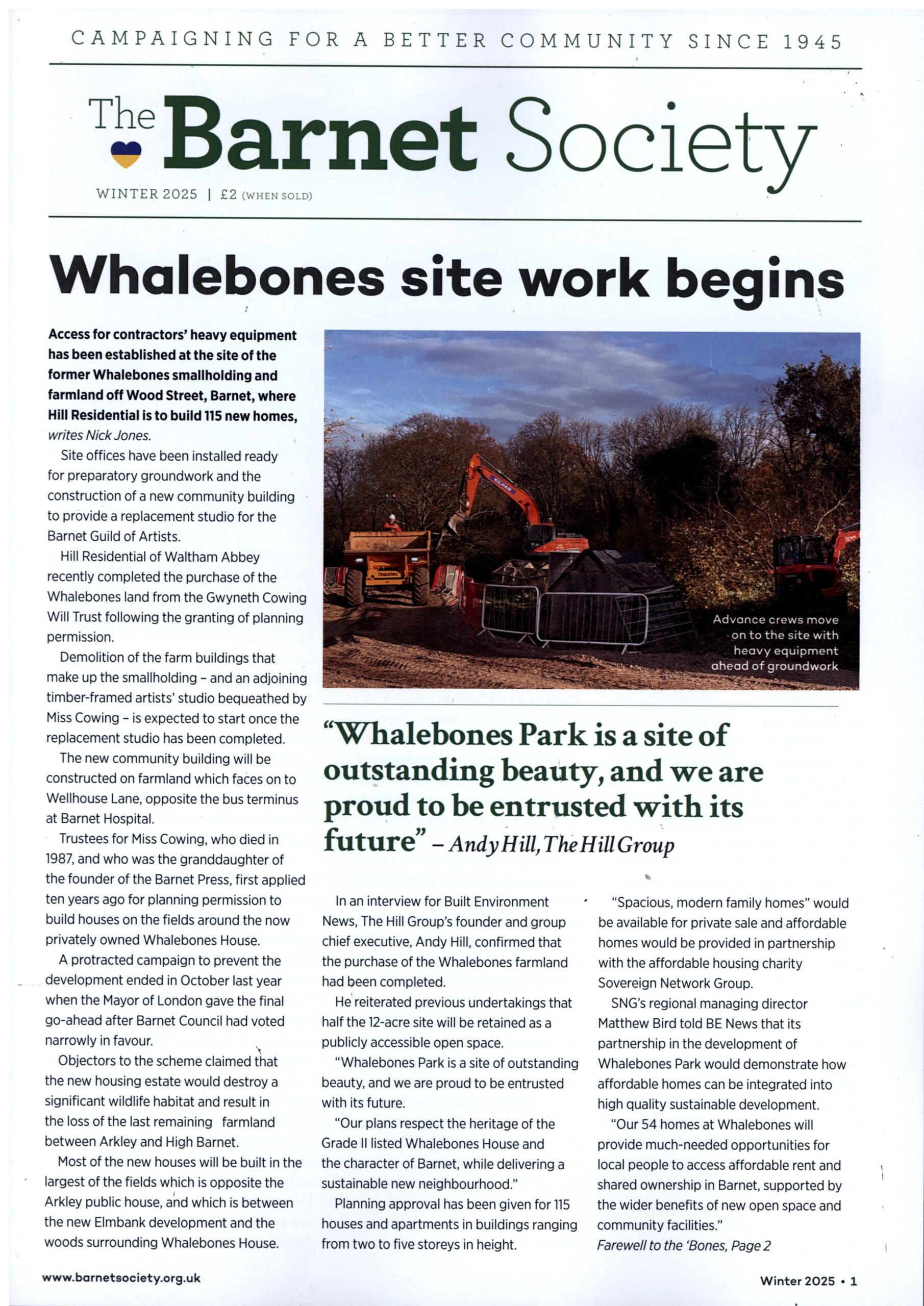Threat of Pymmes Brook sewage pollution needs greater attention say Friends of Oak Hill Park
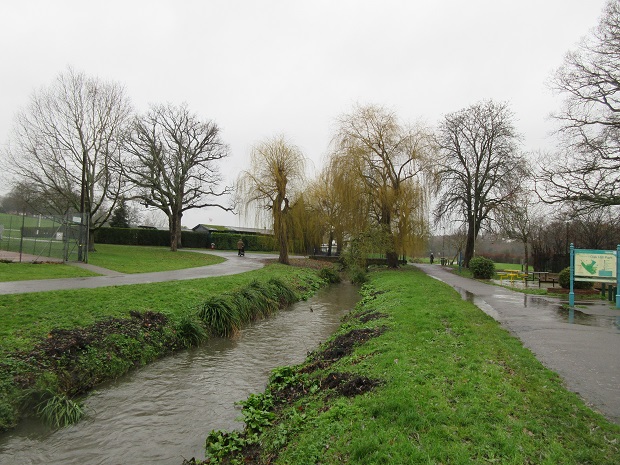
Recent monitoring of water quality has renewed concern about the risk of sewage pollution in Pymmes Brook — seen here on its way through Oak Hill Park, East Barnet.
Much of the blame is placed on the growth in the number of extensions and loft conversions in older houses where foul water discharges are connected to surface water drainage systems.
This saves developers and householders having to pay for more costly connections to the main sewers but results in the surface water being contaminated with faecal bacteria.
Pymmes Brook – which is a tributary of the river Lea – starts as Monken Mead Brook which is sourced from streams formed by underground springs on Hadley Common.
It flows east and then south through New Barnet and East Barnet and when the brook reaches Oak Hill Park tests have shown that the level of human waste can reach alarming levels.
After decades studying the brook’s water quality, Dr Veronica Edmonds-Brown of the University of Hertfordshire, says the worrying levels of pollution she has recorded require far better monitoring of new-build houses and extensions.
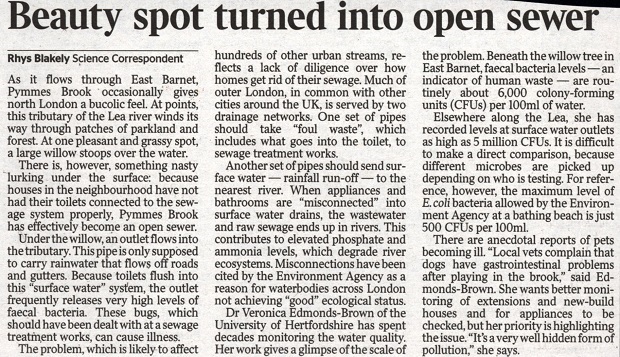
Her recent findings were reported by The Times (2.1.2023) under the headline, ‘Beauty spot turned into open sewer’. Its science correspondent, Rhys Blakely, described the hidden pollution that was not visible at first sight given the “bucolic feel” of the East Barnet parkland:
“At one pleasant and grassy spot, a large willow stoops over the water. There is, however, something nasty lurking under the surface…Pymmes Brook has effectively become an open sewer.”
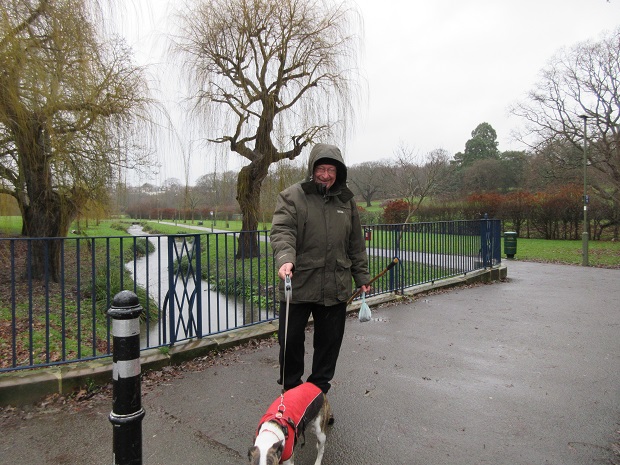
The deterioration in the quality of water in the brook is no surprise to local resident John Deacon who regularly walks his dog through Oak Hill Park and has frequently seen evidence of pollution.
“I have been coming to the park for nearly 30 years, but it has become so polluted in the last few years I can’t let my dog Honey swim in the brook anymore. She used to love it in the water but when I see her paddling, I have had to call her back.”
Mr Deacon said that in recent years when the brook has flooded across the grass the pollution is more visible. One year there was a black slick across the grass. On another occasion a stream running down from Oak Hill wood was bright red; clearly something was not right.
Much of the difficulty in tracing sources of pollution is that three different agencies are involved: pollution found in brooks and streams has to be reported to the Environment Agency; public sewers are the responsibility of Thames Water; and Barnet Council has enforcement powers to deal with issues relating to drains and sewers.
Rob White of the East Barnet Residents Association agrees with Dr Edmonds-Brown that the problem has been exacerbated in recent years by the popularity of ensuite bathrooms and toilets in house extensions and loft rooms.
Many of these improvements did not need planning permission as they were “permitted development” and incompetent or unscrupulous builders might have found it quicker and easier to connect foul water to rainwater drains.
Over the years the Friends of Oakhill Park have noticed increased pollution in the streams in the Oak Hill Wood nature reserve which flow into Pymmes Brook.
“When we do notice pollution, we do report incidents to Thames Water and the Environment Agency.
“It is really difficult for them to locate a particular source of contamination because thousands of gutters and rainwater drains find their way into the streams. But when the agencies do discover misconnections, the owners are of course required to carry out remedial work.
“The suggestion of a ‘plumbing certificate’ when selling a house seems to have merit – the existing owner (who may have used cowboy builders) would then have to carry the cost of correcting any errors. This would be an incentive to have the work done properly in the first place.”
Oak Hill Park became a local nature reserve in 1997 and as one of Barnet’s premier parks was awarded a green flag award for 2009-10.
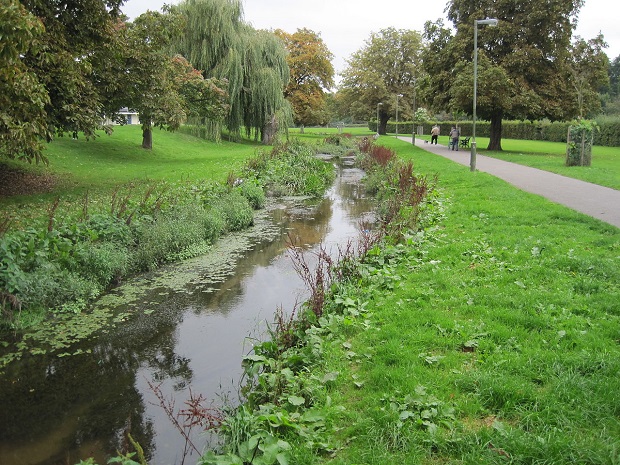
A past photograph of Pymmes Brook illustrates the clarity of the water – a far cry from some of the recent recordings of faecal bacteria levels by Dr Edmonds-Brown.
She found that that the level was routinely about 6,000 colony-forming units (CFUs) per 100ml of water – admittedly a level far lower than at some other surface water outlets along the river Lea but way above the level of 500 CFUs per 100 ml of water which is the maximum level of E.coli bacteria allowed by the Environment Agency as a bathing beach.

